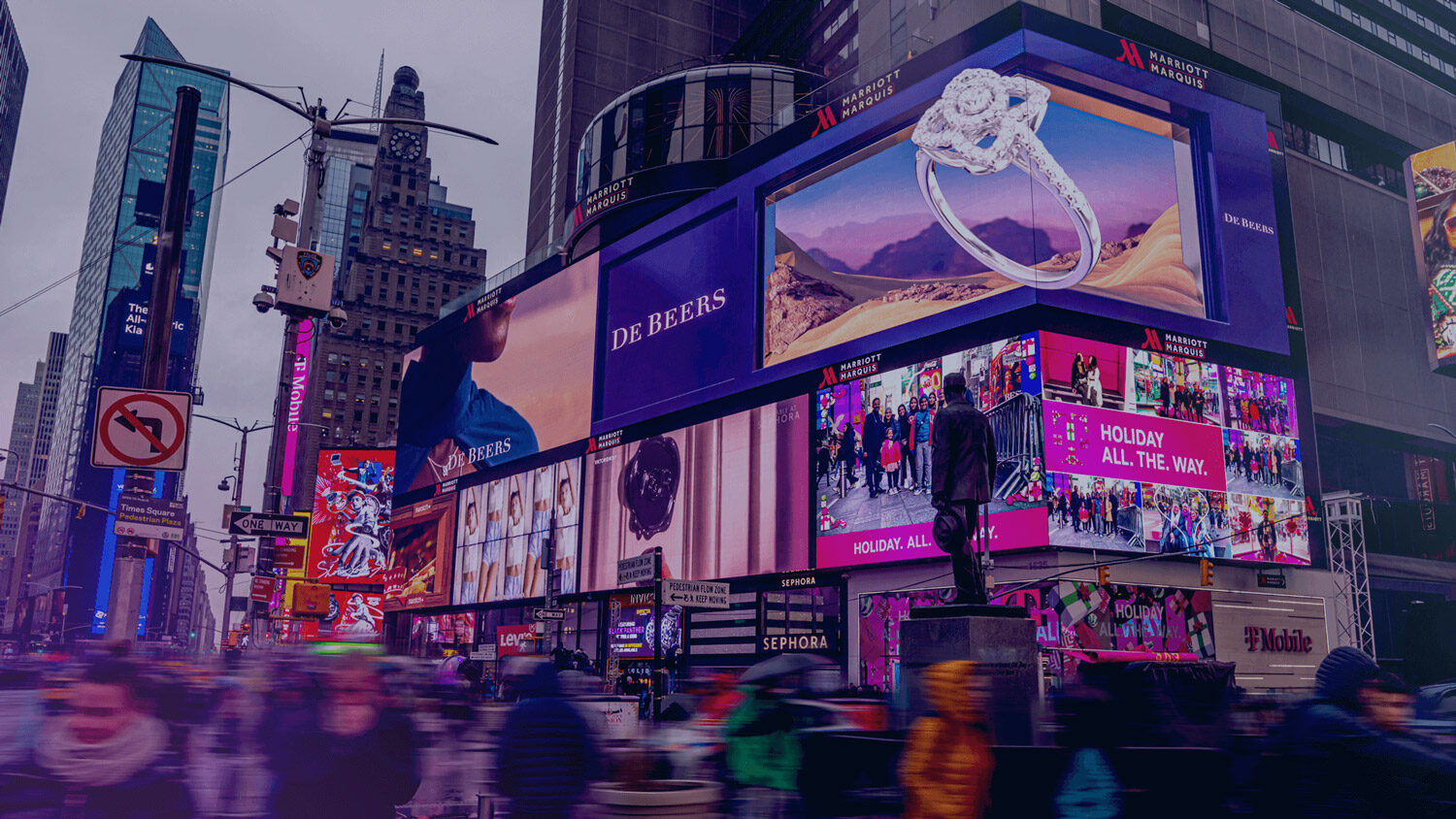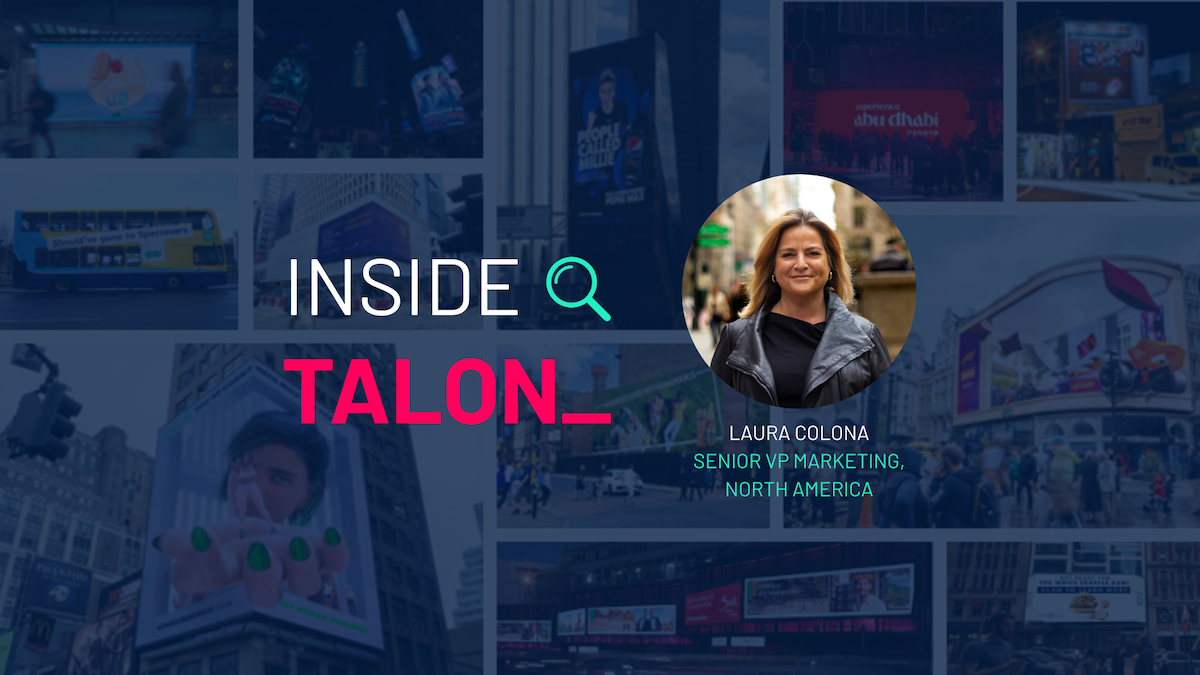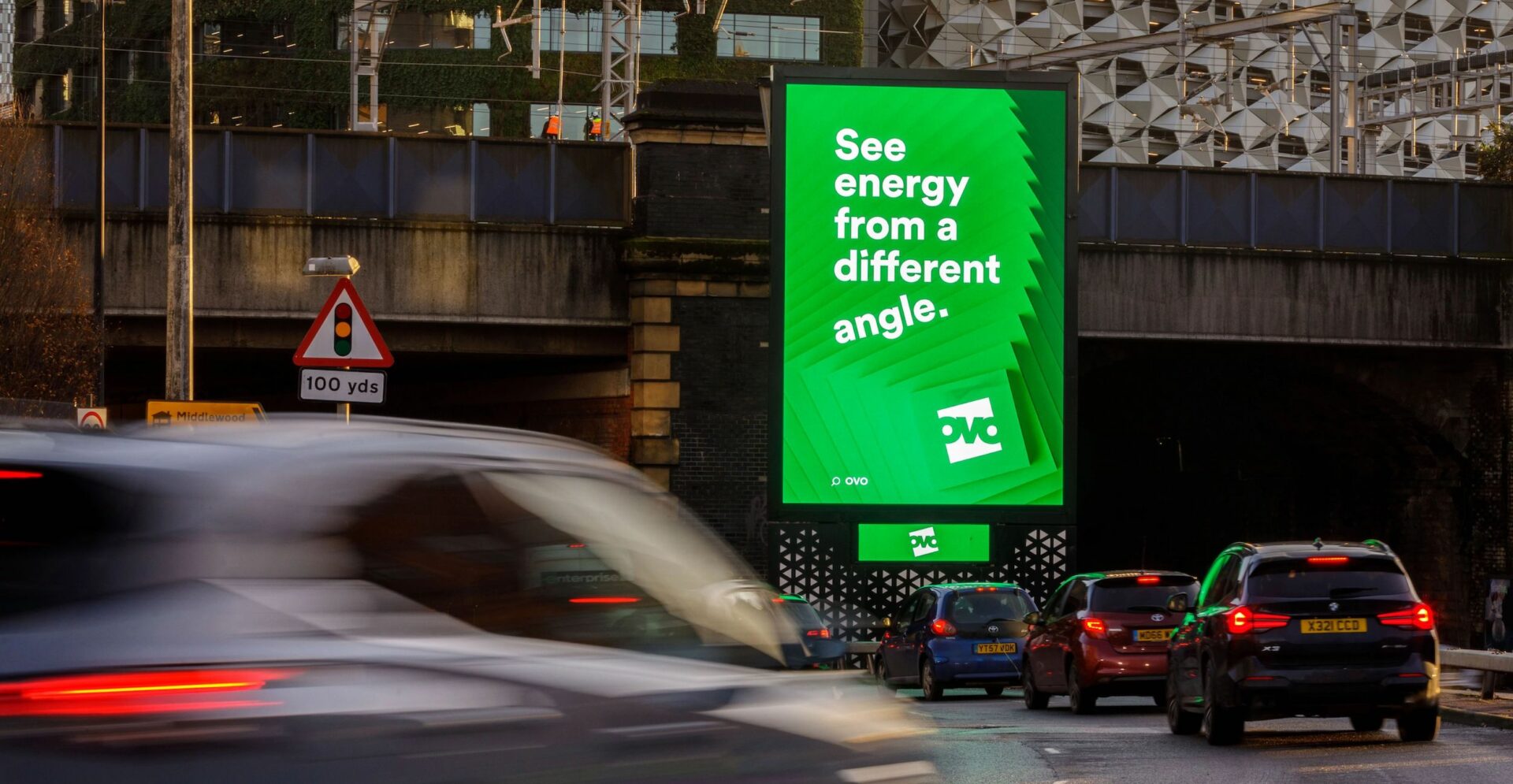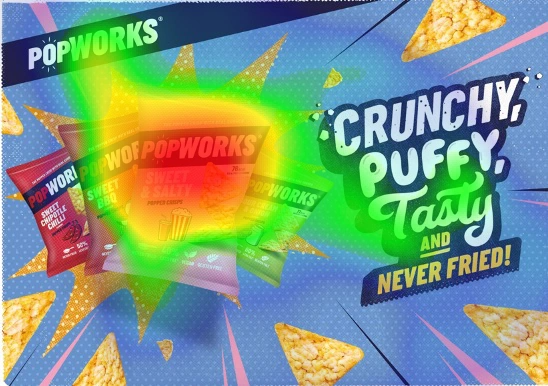How the Out of Home Resurgence Will Impact Other Channels
Originally published by The Drum
OOH Resurgence: Impacts and Synergies with Other Advertising Channels
2022 saw the resurgence of out-of-home (OOH) advertising. Jim Wilson, chief executive at Talon America, explains why advertisers should be investing more in 2023.
Advertisers have embraced a transformed, digitized, and unmissable medium that offers scale, boundless creative opportunity, increased interactivity and measurable outcomes. With a potential recession ahead, advertisers will emphasize efficiencies and outcomes to make their ad dollars work harder — and OOH is poised to win a bigger share of media budgets as a proven channel for driving full-funnel brand results.
Our latest BWG Talon OOH Advertising study of brand marketers and agencies revealed that industry optimism for OOH is growing and advertisers are planning on investing more in OOH in 2023: 93% of advertisers are planning to allocate 5% or more of their overall marketing budgets to OOH in 2023, and 97% are planning to allocate 5% or more in 2025. For context, advertisers currently allocate just 4% to 5% of overall ad budgets to OOH even though we spend 70% of our time outside. In other markets, like the UK, OOH budgets are closer to 10% of the marketing spend.
The deprecation of third-party cookies and Apple’s privacy changes have restricted how digital marketers can target consumers online leaving them to turn to other channels — and OOH is a clear beneficiary. The BWG Talon Study found that 31% of incremental OOH budgets in 2023 will come from social media.
In parallel, linear TV advertising costs have continued to rise despite declining viewership and ratings. The average cost per viewer is projected to increase by 15% (from $304 in 2020 to $349 in 2023) while TV viewership simultaneously declines by more than 7%, according to eMarketer. Conversely, OOH bulletins were found to be 4.6 times more efficient on a CPM basis than TV ads in the top ten DMAs, according to Geopath and SQAD data.
With performance-based media strategies taking center stage in 2023, here are my top five OOH advertising predictions for the year ahead
Performance marketers embrace OOH for attribution
Over 70% of advertisers said that having better measurability and attribution solutions would contribute to greater investment in OOH in our survey — and this bodes well for increased adoption of OOH. While some advertisers are becoming familiar with data-driven OOH capabilities, there is still more education needed on how OOH can reach engaged audiences in their daily journeys with precision and improved measurability. With increased scrutiny on media budgets in the year ahead, advertisers will be drawn to OOH for its ability to directly correlate spending with exposure and outcomes. For instance, access to audience behavior and location data allows OOH advertisers to tie ad exposure back to brand sentiment, purchase intent, location, and website visits. For a national steakhouse OOH campaign, we drove a 318% lift in restaurant visits measured using location data.
Programmatic OOH adoption accelerates
Programmatic is gaining momentum with advertisers as a way to transact for OOH. Insider Intelligence projected that programmatic OOH spending would double this year but it’s still only a small share as only $1 out of every $20 spent on OOH is transacted programmatically. Programmatic OOH gives advertisers the agility, speed, and creative flexibility they are used to in other digital channels, to adjust and optimize campaigns in our dynamic and fast-changing world. With no spending commitments or guarantees, advertisers can shift budgets from other channels or within the channel, across media owners, venue types, or locations, as needed. Additionally, the use of programmatic and DOOH is appealing to advertisers that are increasingly focused on sustainable business practices. As advertisers look to be more nimble next year, we expect programmatic OOH uptake to accelerate — and the BWG Talon survey found that 100% of advertisers are aware that DOOH is available programmatically today.
Expansion of cross-platform OOH video campaigns
Our study found that OOH is increasingly used as part of an advertiser’s cross-platform strategy — and 86% say they somewhat often or very often consider OOH as part of their omnichannel strategy. Digital video is also becoming a big part of the growing digital OOH (DOOH) landscape giving advertisers more opportunities to capture consumer attention with full motion video content across more screen formats — from street furniture and stadiums to restaurants and gyms. With the emergence of cross-channel video campaigns, advertisers can un-silo OOH and connect in-home streaming TV audiences and OOH as an integrated media buy.
Immersive, experiential OOH campaigns go mainstream
During this past year, we’ve witnessed more creative experimentation with digital OOH campaigns that showcased the potential for brands to combine creative, immersive, and experiential elements to the medium — a trend that’s further reinforced with the growing use of dynamic creative capabilities in OOH. For instance, brands are using Augmented Reality (AR) technology to turn digital screens into interactive ads that create meaningful and viral moments, such as Puma’s DOOH campaign for their sneaker launch designed in collaboration with NBA Rookie of the Year LaMelo Ball. Already, marketers are seeing that these campaigns can outperform other mediums in driving buzz and consumer engagement. Looking ahead, we can expect to see that brands will move past experimentation to execute tech-led creative OOH campaigns on a larger scale that stand out, drive amplification, and bring their brand messages to life in the real world.
Spotlight on brand safety drives shift to OOH
Twitter’s recent account verification issues have magnified the importance of brand safety and the imperative for ad platforms to protect brand reputation. OOH ads provide a platform for advertisers to a brand-safe story that is both unskippable and undiluted by potential negative content adjacencies – nor will it be overshadowed by a media owner or publisher that an ad runs on. With the spotlight staying on brand safety as an advertiser imperative, this will become an added driver for shifting ad dollars to OOH.
In just a few short years, the OOH industry has transformed itself into an invaluable channel for advertisers to achieve their brand-building and performance marketing. As advertisers shift their ad dollars to get in front of relevant audiences in the most cost-effective way and at scale, OOH is a winning larger-than-life medium — and will continue its resurgence for delivering brand safety, precision targeting, outcomes-based measurement, and unmatched creativity.




